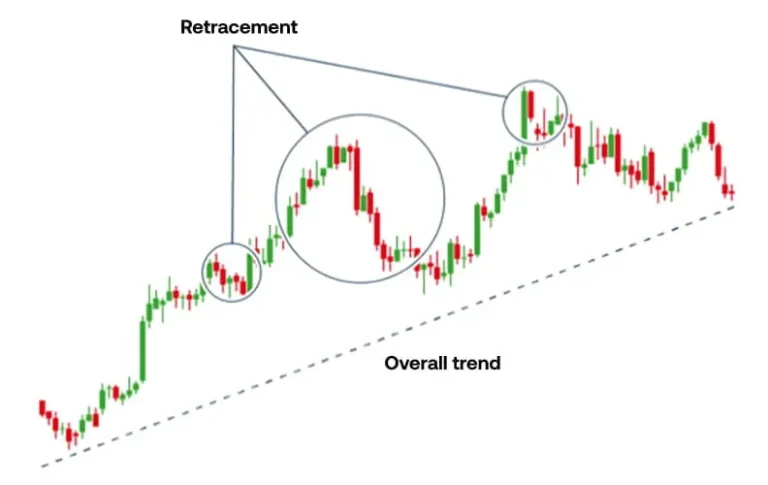High-frequency trading (HFT) is a trading strategy that uses powerful algorithms and high-speed data networks to execute a large number of trades at extremely fast speeds, typically in milliseconds. It is primarily utilized by institutional investors and hedge funds.
- Main Benefit: Increases market liquidity and reduces bid-ask spreads.
- Primary Concern: Can lead to increased market volatility and unfair advantages for large firms.
- Best For: Institutional investors and hedge funds seeking rapid trading opportunities.
- Important Note: Regulatory scrutiny is increasing due to concerns about market manipulation and systemic risk.
Pros and Cons of High-Frequency Trading
The following table outlines the key advantages and disadvantages of high-frequency trading, providing insights into its impact on financial markets.
| Pros | Cons |
|---|---|
| Increases market liquidity | Can increase market volatility |
| Reduces bid-ask spreads | Potentially unfair advantage for large firms |
| Enables rapid trade execution | Risk of algorithmic trading errors |
| Facilitates arbitrage opportunities | Can lead to market manipulation concerns |
| Enhances market efficiency | Creates 'ghost liquidity' |
| Improves price discovery | Increased regulatory scrutiny |
| Provides competitive advantage through technology | High infrastructure costs for implementation |
| Lowers transaction costs for traders | Presents challenges for traditional investors |
| Supports large volume trading strategies | Makes markets more complex to navigate for individual traders |
| Utilizes advanced algorithms for decision making | Can exacerbate sudden market movements during volatility |
| Offers high-speed data processing capabilities | Presents risks of over-reliance on technology |
| Promotes technological innovation in trading platforms | Potential for increased systemic risk in financial markets |
| Increases trading opportunities across multiple markets | Presents ethical concerns regarding fairness in trading practices |
| Enhances risk management through quick adjustments to positions | Cascading effects during market downturns can harm stability |
| Improves market transparency through constant activity | Presents challenges in maintaining fair pricing mechanisms for all traders |
| Boosts financial market activity significantly | Difficulties in monitoring and regulating HFT practices effectively |
| Enables real-time data analysis for informed decisions | The potential for flash crashes due to automated trading responses |
| Supports algorithmic trading strategies effectively | Diminished confidence among retail investors due to perceived disadvantages |
| Facilitates global access to markets quickly | The complexity of HFT strategies can alienate average investors |
| Reduces human error in executing trades | The fast-paced nature can lead to significant losses if not managed properly |
| Encourages competition among traders, improving overall performance | The potential for creating price bubbles due to rapid buying/selling actions |
| Aids in dynamic trading strategies that adapt quickly to changes | The need for constant technological upgrades can be burdensome financially |
| Supports electronic trading platforms that enhance user experience | The risk of hacking or technical failures impacting trades negatively |
| Makes it possible to execute microsecond trades efficiently | The reliance on speed can overshadow fundamental analysis in decision-making |
| Aids in capital allocation by identifying profitable opportunities swiftly | The potential for creating an uneven playing field among different types of investors |
| Simplifies the process of executing complex trading strategies | The possibility of algorithmic biases affecting trade outcomes negatively |
| Paves the way for innovative financial products and services | The ethical implications of HFT practices remain a contentious issue in finance |
High Frequency Trading Market Statistics
Analysis of global HFT market size, growth trends, and trading volumes across major exchanges, highlighting the significant impact on modern financial markets.
| Statistical Analysis & Market Data | |
|---|---|
| Global HFT Market Size (2023) | $65.4 billion with projected CAGR of 5.6% through 2028 |
| HFT Trading Volume Percentage | Approximately 50-60% of daily U.S. equity trading volume |
| Average Trade Speed | Microseconds to milliseconds (usually 10-6 to 10-3 seconds) |
| Market Penetration | Over 80% of orders in major exchanges are algorithmic trades |
| Daily Transaction Volume | Average of 3-5 billion shares traded via HFT systems daily |
| Profit Margins | Average of 0.01% to 0.05% per trade |
| Market Making Activity | HFT firms handle approximately 70% of all market making activities |
| Geographic Distribution | 85% concentration in North America and Europe markets |
| Industry Employment | Approximately 300,000 professionals worldwide in HFT sector |
| Technology Investment | Average annual technology spend of $1.5B per major HFT firm |
HFT Infrastructure Requirements
Comprehensive overview of technical specifications and infrastructure requirements necessary for implementing successful high-frequency trading systems.
| Technical Specifications & Requirements | |
|---|---|
| Network Latency Requirements | Sub-microsecond latency (less than 100 microseconds round-trip) |
| Hardware Processing Power | Minimum of 64-core processors with 256GB RAM per server |
| Connectivity Infrastructure | Direct fiber optic connections to exchanges with redundant paths |
| Data Storage Capacity | Minimum 1 petabyte high-speed storage for market data analysis |
| Programming Languages | C++, FPGA programming, Python for analysis, Java for infrastructure |
| Risk Management Systems | Real-time risk calculation capability processing 100,000 events/second |
| Market Data Feeds | Multiple direct exchange feeds with backup connections |
| System Redundancy | Minimum N+2 redundancy for all critical systems |
| Monitoring Systems | Real-time monitoring with sub-millisecond alert capability |
| Security Requirements | Multi-factor authentication, encryption, and audit logging systems |
HFT Cost-Benefit Analysis
Detailed breakdown of costs, potential returns, and value considerations for implementing and maintaining high-frequency trading operations.
| Cost & Value Analysis | |
|---|---|
| Initial Infrastructure Cost | $10-50 million for basic HFT setup and infrastructure |
| Annual Maintenance Cost | $2-5 million for technology maintenance and upgrades |
| Data Feed Costs | $500,000-1 million annually for premium data services |
| Colocation Fees | $25,000-50,000 monthly per exchange location |
| Personnel Costs | $5-10 million annually for technical and trading staff |
| Regulatory Compliance Cost | $1-2 million annually for compliance and reporting |
| Average Daily Trading Revenue | $100,000-500,000 for established HFT operations |
| Break-even Timeline | 2-3 years for new HFT operations |
| Return on Investment | 15-35% annual ROI after initial setup period |
| Risk Management Costs | $2-3 million annually for risk systems and insurance |
HFT vs Traditional Trading Comparison
Comparative analysis between high-frequency trading and traditional trading methods, examining key differences in approach, technology, and outcomes.
| Comparative Analysis & Alternatives | |
|---|---|
| Execution Speed | HFT: Microseconds vs Traditional: Seconds to Minutes |
| Transaction Volume | HFT: Millions daily vs Traditional: Hundreds to thousands |
| Initial Capital Required | HFT: $10M+ vs Traditional: $100K-1M |
| Profit per Trade | HFT: Fractions of cents vs Traditional: Dollars to hundreds |
| Technology Requirements | HFT: Extensive infrastructure vs Traditional: Basic platforms |
| Market Impact | HFT: Minimal per trade vs Traditional: Moderate to high |
| Strategy Timeframe | HFT: Milliseconds to minutes vs Traditional: Hours to months |
| Risk Profile | HFT: High frequency, low risk vs Traditional: Lower frequency, higher risk |
| Personnel Requirements | HFT: Technical experts vs Traditional: Market analysts |
| Market Accessibility | HFT: Limited to large firms vs Traditional: Open to all |
Future of High Frequency Trading
Analysis of emerging trends, technological advancements, and regulatory changes shaping the future landscape of high-frequency trading.
| Future Outlook & Industry Trends | |
|---|---|
| Artificial Intelligence Integration | Machine learning algorithms will optimize trading strategies and risk management |
| Quantum Computing Impact | Expected implementation by 2026-2028 for ultra-fast processing |
| Regulatory Evolution | Increased oversight and transparency requirements by 2025 |
| Market Structure Changes | Transition to decentralized exchange networks by 2027 |
| Technology Innovation | Development of sub-nanosecond trading capabilities by 2026 |
| Geographic Expansion | Growth in Asian markets with 40% increase in HFT activity |
| Environmental Impact | Push towards green computing solutions for data centers |
| Competition Dynamics | Market consolidation with top 10 firms controlling 80% of volume |
| Infrastructure Development | Investment in space-based communication networks for trading |
| Cryptocurrency Integration | Expansion into digital asset trading with specialized algorithms |







